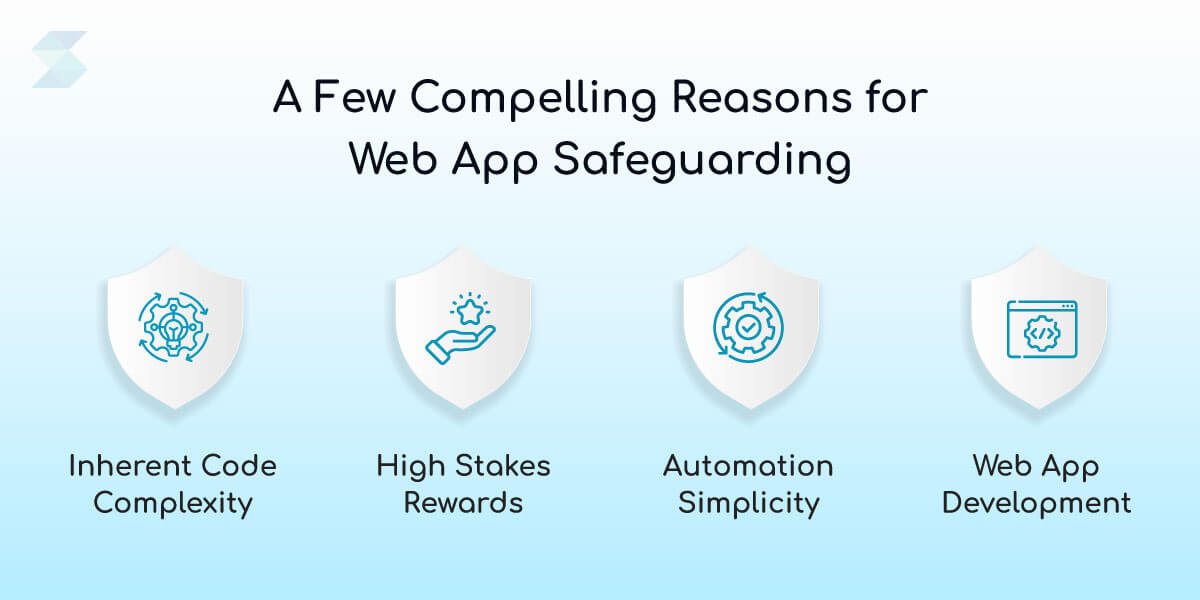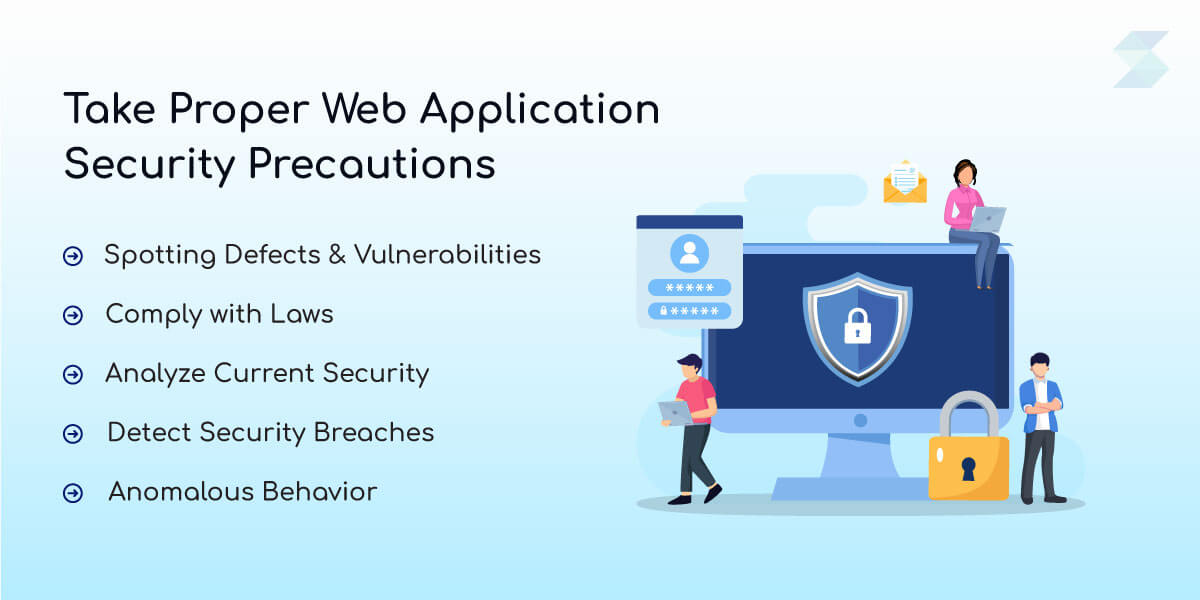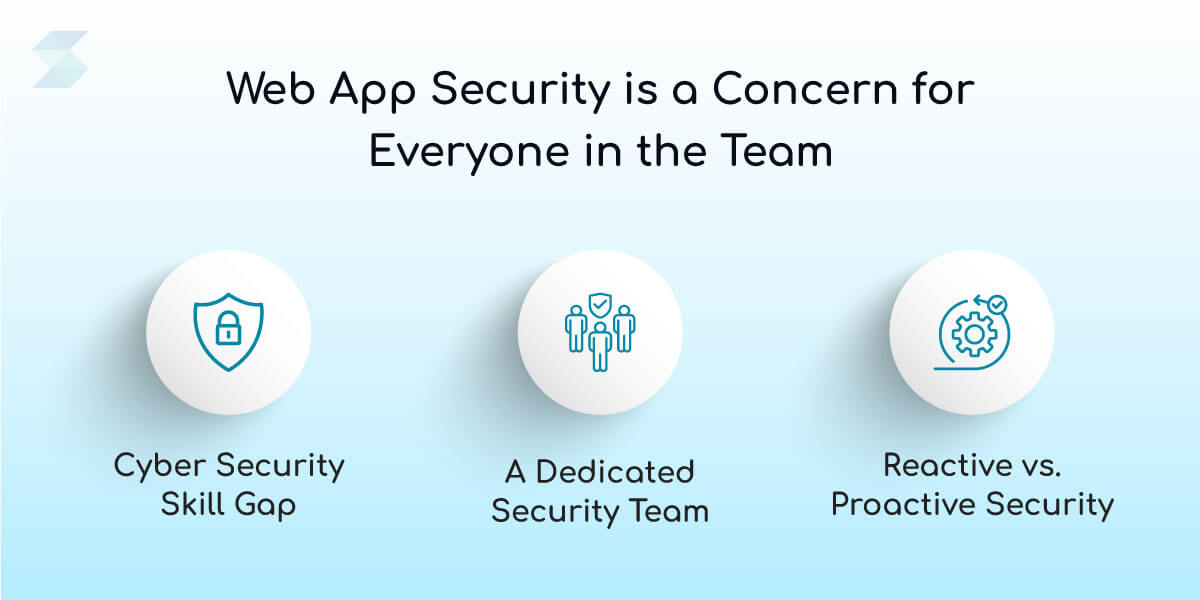
In today’s digital landscape, web applications play a pivotal role in enabling businesses to provide their services online. Over the past few years, their significance has grown exponentially, thanks to the expanding user base accessing various services via the internet.
Yet, in combination with this surge in web application usage, the risk of cyber-attacks and data breaches appears larger than ever before. It has thus become imperative to establish a robust framework of web application security measures, shielding sensitive data and thwarting any unauthorized intrusion.
In the following article, we delve into six essential web application security best practices that are important for safeguarding your web applications and preserving the sanctity of your valuable data.
What is Web Application Security?
Web application security stands as the crucial process of securing websites and online services against a lot of security threats that exploit vulnerabilities nestled within an application’s complex codebase. This includes prime targets such as content management systems like WordPress, database administration tools exemplified by phpMyAdmin, and the ever-popular Software as a Service (SaaS) applications.
The urgency of safeguarding web applications derives from several compelling reasons.

- Inherent code complexity: The complex nature of web application source code elevates the likelihood of concealed vulnerabilities and shocking manipulations by malicious actors.
- High-stakes rewards: The bounty reaped from successful manipulation of web applications can be exceedingly valuable, often yielding access to sensitive private data, amplifying the allure for attackers.
- Automation simplicity: Most web application attacks are highly automatable, allowing cybercriminals to unleash their assaults indiscriminately against a multitude of targets, sometimes numbering in the thousands or even tens of thousands.
- Web App Development Services that neglect to prioritize the security of their web applications expose themselves to a range of dangerous consequences. These include information theft, corrosion of client trust, revocation of licenses, and the specter of legal repercussions.
Importance of Web Application Security
The era of digitization has ushered in numerous advantages, but it has also introduced new challenges in the form of hackers and cyber threats. With each passing day, hackers continue to refine their techniques, pushing the boundaries of previously established security standards. Regular web security testing emerges as a crucial practice to remain vigilant against potential vulnerabilities that malicious actors might exploit to compromise your application.
Traditionally, the primary focus of developers revolved around crafting apps and software, often neglecting their security aspects. Cybersecurity concerns were frequently relegated to the periphery of boardroom discussions and business meetings. However, this complacency was upended when high-profile security breaches within corporate behemoths started making front-page news, resulting in substantial financial losses for these web application development companies. It was then that the gravity of cyber threats was recognized, prompting a paradigm shift in the prioritization of cybersecurity.
Therefore, it is crucial not to underestimate the significance of web application security testing if you desire to:

1. Spotting Defects and Vulnerabilities
One of the most important advantages of comprehensive security testing is its ability to unveil any lurking security flaws and vulnerabilities within your application. Web application security testing has assumed a pivotal role in the Software Development Life Cycle (SDLC), instilling a security-conscious mindset in developers during the application development process.
2. Comply with Laws
Council conglomerates and regulatory frameworks have been established, enacting stringent laws to govern data security and privacy within web applications. For many businesses, including those in e-commerce, finance, and banking, web application security testing has become a mandated requirement, safeguarding the interests of users.
Web app Development Company conducting regular web app security testing is not only advisable but essential to ensure ongoing compliance with prevailing legal standards. It’s worth noting that web security testing isn’t only the domain of businesses; it’s equally vital for developers who deploy web applications for public use through app distribution platforms or SaaS (Software as a Service) offerings.
Web app security testing also extends its survey to your current security infrastructure, scrutinizing it for potential weaknesses and vulnerabilities. Even the dedicated firewalls safeguarding your web application can harbor vulnerabilities. By subjecting your system to web application security testing, you can pinpoint these vulnerabilities and address them proactively, preventing any potential exploitation.
3. Analyze your Current Security
A significant advantage of conducting a security audit is its capacity to identify security breaches or suspicious activities within your application. According to IBM, the average time for companies to detect a data breach in their systems is 192 days. By this point, the damage incurred can be extensive and potentially irreversible. Regular web security testing is instrumental in swiftly uncovering breaches and hacker activities, thereby shielding your business from severe repercussions.
4. Detect Security Breaches and Anomalous Behavior
A significant advantage of conducting a security audit is its capacity to identify security breaches or suspicious activities within your application. According to IBM, the average time for companies to detect a data breach in their systems is 192 days. By this point, the damage incurred can be extensive and potentially irreversible. Regular web security testing is instrumental in swiftly uncovering breaches and hacker activities, thereby shielding your business from severe repercussions.
The comprehensive insights picked from a security audit empower you to devise and prioritize effective risk responses in the event of a breach or hack. Furthermore, it aids in the formulation of an incident response plan tailored to the unique needs of your application or business, ensuring a swift and decisive response to security incidents.
Looking for Web App Experts to Implement an Ideal Security Strategy?
Let’s ConnectBest Web Application Security Best Practices
1. Include Everyone in Security Practices

Some businesses continue to hold the belief that security is a concern best left to a specialized team. However, in today’s dynamic business landscape, such a perspective is no longer sustainable for several reasons:
- Cybersecurity skill gap: The growing inequity in cybersecurity expertise means that security teams often struggle to keep pace with the rapid growth of businesses. Relying solely on dedicated security personnel becomes increasingly challenging.
- A dedicated security team: A dedicated security team, when kept from the development process, can accidentally become a bottleneck, impeding the smooth progression of development projects.
- Reactive vs. Proactive security: A reactive security approach, as opposed to a proactive one, can exacerbate the workload for the security team as they are forced to deal with a mounting number of issues.
In the contemporary landscape, the prevailing best practice for crafting secure software is known as Sec DevOps. This approach extends beyond DevSecOps, underlining the notion that every individual involved in web application development, or any other application for that matter, shares a degree of responsibility for security.
This includes custom software development solutions, who must be adept at writing secure code; quality assurance (QA) engineers, who need to apply security policies to their testing processes; and event management and executives, who should factor security considerations into key decision-making.
Achieving an effective secure DevOps environment necessitates a considerable investment in education. Everyone must possess an awareness of security threats and risks, understand potential application vulnerabilities, and assume a sense of responsibility for security. While this educational endeavor demands time and effort, the dividends it pays in terms of top-tier secure applications are well worth the investment.
Top Reasons for Custom Web Application Will Prove to be a Smart Choice!
Discover Insights!2. Adopt a Cybersecurity Framework
The world of cybersecurity is complex, demanding a meticulously structured approach. It is all too easy to overlook critical facets and jump into disarray. This explains why numerous organizations opt to anchor their security strategy upon a carefully chosen cybersecurity framework.
A cybersecurity framework constitutes a methodical approach that commences with exhaustive scrutiny of security risks. It encompasses a spectrum of activities, including the formulation of a comprehensive cyber incident response plan and the development of tailored application security checklists. As the scale of an organization expands, the necessity for such a strategic approach becomes even stronger.
Yet another compelling rationale for embracing a cybersecurity framework lies in the recognition that all faces of cybersecurity are interlinked. Web security cannot be isolated as a distinct challenge but is an integral component of the broader cybersecurity landscape.
3. Automate and Integrate Security Tools
One of the most effective measures for maintaining software security is the regular installation of software updates and patches. Why go through the trouble of solving problems that have already been addressed? However, it’s crucial to plan for each update meticulously, as this necessitates a well-thought-out architectural strategy to avoid potential API compatibility issues when transitioning to newer versions.
4. Secure Access to Log Data
Access to comprehensive log data stemming from your daily cloud operations is indispensable for any incident response plan. The collection and interpretation of such data in the period preceding an incident can significantly impact security and prove invaluable for subsequent investigations. Without this critical knowledge, your response to a security incident may be rendered ineffectual.
Want to Develop Secure Web App Development?
Hire Web App Developer!5. Implement Data Encryption
When it comes to best practices in web application security, encryption of both data at rest and data in transit assumes paramount importance. Fundamental encryption measures should include, among other things, the use of a secure SSL protocol with an up-to-date certificate.
The storage of sensitive user data, such as IDs and passwords, in plain text, is unacceptable, as it leaves the door open to potential man-in-the-middle (MITM) attacks. It is imperative to employ the most robust encryption algorithms available.
6. Harness the Power of Penetration Testing
While automated tests are adept at identifying most security issues before release, the possibility of overlooked vulnerabilities still exists. To mitigate this risk, it is prudent to enlist the services of an experienced penetration tester, often referred to as an ethical hacker.
This skilled individual endeavors to breach the application’s security defenses, unearthing potential vulnerabilities and identifying potential attack vectors, ultimately fortifying the system against real-world threats. The penetration tester must remain an external expert with no involvement in the project to ensure unbiased evaluation and security enhancement.
The Final Thoughts
Web application security is like the locks and alarms in your house. It is super important to keep your stuff safe. With more and more cyber bad guys out there, you need to follow some good rules to make sure your web apps stay safe.
By following these rules, you can easily secure the security of your web application, minimizing the risks posed by data breaches and other cyber threats. It is important to recognize that web application security is an enduring commitment, necessitating regular updates and vigilant monitoring to maintain the sustained safeguarding of sensitive data.
Protect Your Web App’s sensitive Data from Cyberattacks.
Ask Us How!Tags
Related Blog
Want to get started with App Development?
These applications are acquiring enormous prevalence by offering hands-on enterprise mobility solutions for organizations around the globe.
Start A ConversationLatest Blogs




Custom Website Development Solutions: A Way to Achieve Long-term Success
Read More














